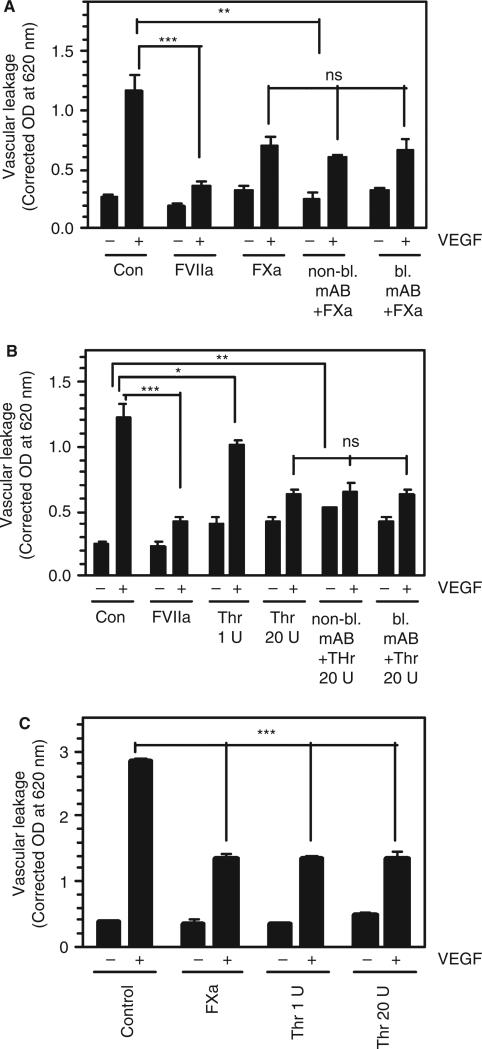Fig. 6.
FXa and thrombin provide a partial barrier protective effect against vascular endothelial growth factor (VEGF)-induced hyper-permeability independently of endothelial cell protein C receptor (EPCR). (A) Wild-type mice were injected with a control vehicle (Con), FVIIa (120 μg kg−1 body weight), FXa (120 μg kg−1 body weight), non-bocking EPCR mAb, or blocking EPCR mAb, followed by FXa. The mAbs were administered intraperitoneally at 4 mg kg−1 body weight 30 min before FXa (three mice per group for the EPCR mAb group; otherwise, six mice per group). (B) Wild-type mice were injected with a control vehicle (Con), FVIIa, thrombin (Thr) (1 U or 20 U kg−1 body weight [0.25 or 5 μg kg−1 body weight]), blocking EPCR mAb, or non-blocking EPCR mAb, followed by Thr (20 U kg−1 body weight) (three mice per group for the EPCR mAb group; otherwise, six mice per group). (C) EPCR-deficient mice were injected with a control vehicle, FXa (120 μg kg−1 body weight), or Thr (1 U or 20 U kg−1 body weight [0.25 or 5 μg kg−1 body weight]) (five mice per group). In all experimental groups, 30 min after FVIIa, FXa or Thr injection, VEGF or saline was injected intradermally, and vascular leakage into the surrounding skin tissue was measured as described in Materials and methods. *P < 0.05; **P < 0.01; ***P < 0.001. NS, no statistically significant difference.

